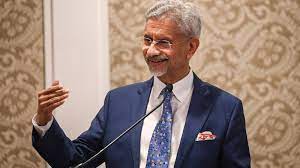
India, here we come! This seems to be the unmistakable message from Latin America. After all, if tiny and far distant, though by no means unimportant, countries like El Salvador, Costa Rica, Dominican Republic and Paraguay have opened up diplomatic missions in Delhi, they must have pragmatic reasons to do so. It underlines India’s rising global importance and symbolises a momentous shift in global power relations.
India is, of course, yet to reciprocate their gesture. Should it be taken to mean that the Indian elephant has harrumphed and slowed to a waddle? Or is it that India is still not ready to play ball with distant Latin America? New Delhi’s unwillingness to open up diplomatic missions in the above-mentioned countries notwithstanding, India’s footprints in Latin America have been growing thanks to its entrepreneurial class and India’s active presence in new groupings like IBSA and BRICS.

New Growth Poles
The transfer of global wealth and economic power from the Euro-Atlantic world to the Global South is without precedent in modern history. The world has changed. So have the players. India, “a land of snake charmers”, Kamasutra and the ‘Hindu rate of growth’ has become the world’s third largest economy surpassing Japan (OECD). And Latin America, dismissed contemptuously as a “land of tomorrow” and synonymous with debt bomb, stagflation and guerrilla wars is, today, a continent of monumental change. The region has moved in the direction of creating a new narrative of development and inclusive politics.
From a macroeconomic point of view, Latin America is perhaps in the best position in nearly 100 years, experiencing a phase of reasonable economic growth, high commodity prices and relatively low inflation. If Brazil has moved ahead of the UK to become the world’s sixth largest economy, Mexico is expected to rank as the world’s seventh largest economy by 2020.
According to the Economic Commission for Latin America and Caribbean (ECLAC), India and Latin America, together with China “are the world’s new growth poles”. If Asian economies, particularly Chinese and Indian, are growing three times as fast as the industrialised ones, says the study, Latin America and the Caribbean region have “weathered the international crisis with remarkable resilience”.
Synergies
Synergies and complementarities are driving India towards deeper engagement with countries of Latin America and the Caribbean region. The same holds good for Latin America as well. ECLAC’s optimism is shared by a recent report from the Inter-American Development Bank titled ‘India—Latin America’s Next Big Thing?’ India cannot afford to miss the opportunity in the region which has a population of about 600 million and a GDP of nearly $5 trillion.
India’s trade with Latin America remained peripheral for decades. Around the time India began economic reform, the Indo-Latin American trade was only around $500 million. Continental distance, language barrier and lack of information were trotted out as factors for such a state of affairs. But India Brazil South Africa (IBSA) Dialogue Forum, established in 2003, changed all that. When India began to engage with Brazil, it realised the potential of the entire Latin American and Caribbean region.
The economic reforms undertaken by India in 1991 changed the way India was perceived by the international community. With impressive economic growth, India’s foreign policy profile also changed. Gradually, NAM and other similar Third World-oriented and ideologically-inspired platforms were placed on the backburner and trade diplomacy, reform in global financial institutions and engagements with regional economic integration groupings acquired new salience. Pragmatism, not moralism, began to define India’s foreign policy behaviour.
Trade Diplomacy
Against this backdrop, India has begun seriously engaging the Comunidad de Estados Latinoamericanos y Caribenos (CELAC) to boost to its ties with this vibrant region. The 33-member organisation, which includes every country in the Western Hemisphere except the US and Canada, has practically rendered the Organisation of American States redundant. The two-way India-Latin America trade is expected to double in the next five years from the current level of $30 billion. Only recently India’s trade with Peru crossed a billion dollar mark. Other members of the billion dollar club include Brazil, Venezuela, Mexico, Chile, Colombia and Argentina. Presently, India’s largest exports are destined towards Brazil (5.043 bn), Mexico (2.698 bn) and Colombia (1.042 bn). India’s exports to Peru are likely to reach a billion dollar mark in 2014.
The Latin American region accounts for less than 5 % of India’s trade, but it’s growing fast. Latin America and the Caribbean region is also becoming an attractive investment destination for India. India’s preferential trade agreements with Chile and MERCOSUR (Argentina, Brazil, Uruguay, Paraguay and Venezuela) have given boost to the two- way trade. India is presently negotiating a Free Trade Agreement (FTA) with Mexico and Peru.
India versus China?
India has a slew of economic and strategic reasons to cultivate ties with Latin America, and these may include the China factor. Of course, India is no match for China. As author Gurcharan Das says, “India is a soup and China a salad”. A Brookings study by Tanvi Madan, too, echoes similar sentiment: “China’s Marathon is India’s Triathlon.” India need not follow the Chinese lead. In fact, India’s race is different. Unlike China which is gobbling up Latin America’s raw materials and flooding its markets with cheap goods, India is investing heavily in manufacturing and services sector. Latin Americans have begun to see the difference. According to a World Bank study, China’s success “is looked upon with admiration” but there is also “concern about the effects” of this engagement. Concern is an understatement; fear is the right word. In Africa, China’s deeper engagement has raised the spectre of “new colonialism.” It would not be surprising if Latin America thinks the same way in a not-too-distant future.
The IBSA Factor
Interestingly, the spurt in India’s trade and investment with Latin America is triggered largely by the dynamism that Indian IT, pharmaceuticals, mining, energy and manufacturing sectors have shown. The Indian government seems to be still moving cautiously. Of course, what China can do, India may not be able to do with its noisy democracy. But must we give the impression that we are reluctant partners? IBSA deserves to be complimented for opening up new doors to India in Latin America. Earlier, India and Latin America were rarely at the table when major global decisions were made. Today, as an ADB study notes, “they are often seated side-by-side, shaping global negotiations on topics ranging from trade to climate change.”





